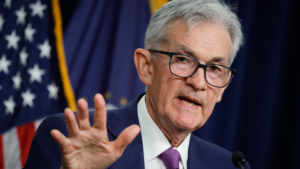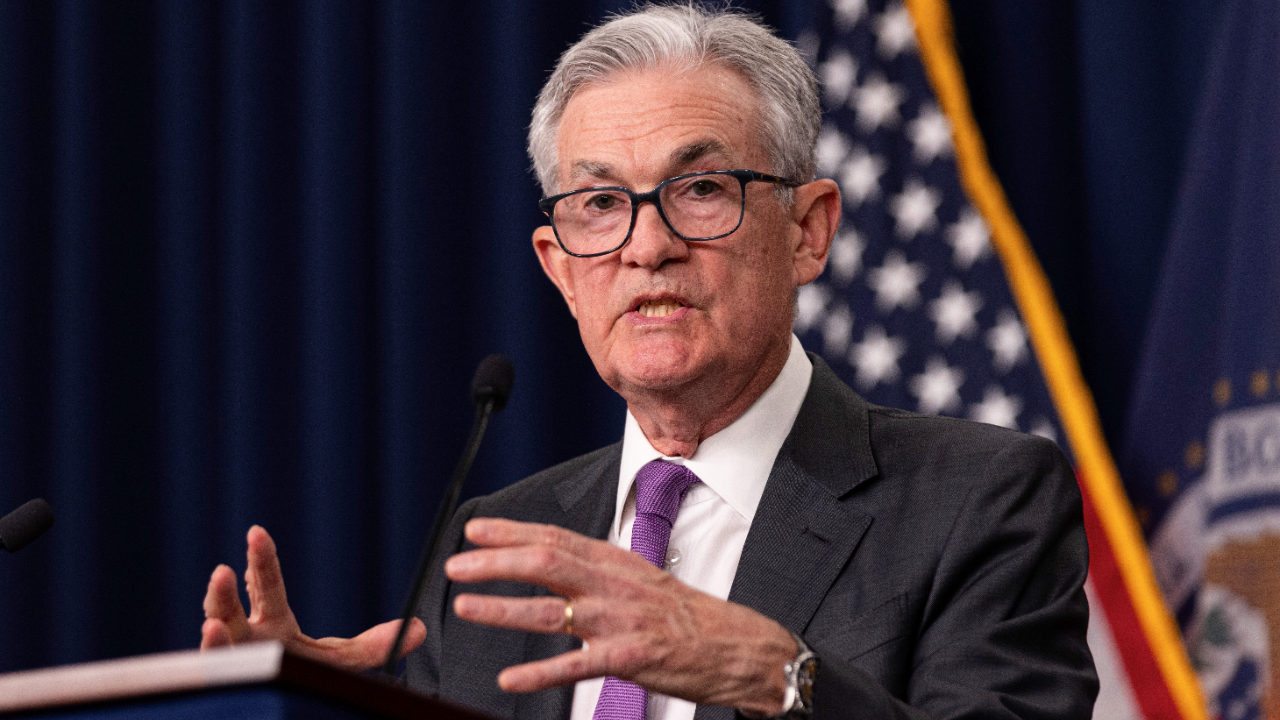May Fed meeting preview: Trump wants lower interest rates, but for now, his tariffs are keeping the Fed on hold

When the Federal Reserve decides what to do with interest rates to manage the economy, the data usually speaks for itself. Policymakers, for instance, knew they needed to rush to cut interest rates in 2020 as the gears of commerce came to a screeching halt at the onset of the coronavirus pandemic. Two years later, when inflation surged to a 40-year high and jobs were plentiful, the central bank hiked borrowing costs to cool off the economy and bring prices back in check.
Those days may now be over.
President Donald Trump’s trade war is roiling business, consumer and investor confidence, threatening to derail hiring and spending while also raising the risk of a recession, economists say. At the same time, the extent of those tariff hikes is threatening to push up prices across the country as the cost of importing foreign goods and materials becomes more expensive.
It could put the Fed’s two jobs — keeping prices stable while also maintaining a healthy labor market — at odds with each other. And there’s a lot at stake, as Trump steps up his pressure on the U.S. central bank to cut interest rates. If both Americans’ cost-of-living and job prospects soon need saving, the U.S. central bank’s next moves might come down to individual preferences on how each official is reading the data, a level of subjectivity that might open it up to even more scrutiny.
“Whatever they do, it will be interpreted politically,” said Vincent Reinhart, chief economist at BNY Investments, who spent more than two decades at the Fed. “If the May meeting comes and goes with an unchanged policy stance, then the headline is going to be, ‘Fed ignores the president.’ And if they were surprisingly to ease policy, the headline would be, ‘Fed bows to president.'”
For now, officials seem inclined to stand pat as they wait to assess the total impact of Trump’s policies. The Federal Open Market Committee (FOMC) is widely expected to leave interest rates unchanged at 4.25-4.5 percent when they wrap up their next rate-setting meeting on May 7, moves that will keep the price of borrowing money elevated across credit cards, auto loans, home equity lines of credit (HELOCs) and more.
There’s just not enough data to compel them to consider action one way or the other. That might change over the course of the next month.— Greg McBride, CFA, Bankrate chief financial analyst
Wondering what to expect from the Fed’s next meeting — and beyond? Here are the biggest themes to keep an eye on and what they could mean for your money.
1. If both are in conflict, what will be the Fed’s priority: inflation or the labor market?
Fed officials’ individual views matter because the FOMC sets interest rates through a majority vote. Fed chairs steer the committee to a consensus, but their vote matters no more than anyone else’s.
“It’s always a judgment call,” Reinhart said. “Some just care more about maximum employment in a transition and some worry more about the long-run pursuit of price stability.”
U.S. central bankers may already be starting to diverge. A week after Fed Chair Jerome Powell warned in mid-April that tariffs could lead to a persistent inflation problem and stressed that the Fed has an “obligation” to keep price pressures in check, Fed Governor Christopher Waller appeared less concerned about any inflation risk from tariffs.
I’m willing to look through whatever tariff price effects there are. I would expect more rate cuts, and sooner, once I started seeing some serious deterioration in the labor market.— Christopher Waller, Fed Governor
Those views highlight the two main concerns. On the one hand, lowering interest rates to offset any economic weakness from tariffs could potentially fuel — and prolong — inflation. On the other, a slowdown in hiring or layoffs could actually be deflationary. Consumers would have less money to spend, meaning companies don’t have as much power to hike prices and pass along higher tariffs.
The latter mirrors the Fed’s response to Trump’s first-term trade war in 2019. Officials preemptively cut interest rates out of fear that the U.S.-China trade war might cause the economy to roll over. Inflation, though, had been steadily below the Fed’s target for years, giving the Fed room to cut.
“This is a Fed that will position itself to clean up the mess, but it can’t act in anticipation of the mess,” Reinhart said. “The Fed will be slow to cut rates and be reluctant to cut them all that aggressively.”
If the Fed is forced to make a choice, the chief central banker said in April that the Fed would focus on the side of its mandate that’s furthest from its goals. The Fed shoots for a 2 percent inflation target, and currently, the Fed considers a 4.2 percent unemployment rate “full employment,” its latest projections show.
“It’s hard to say exactly when you’ll know, but clearly that learning process is ongoing,” Powell said. “You’ll know more as the months go by.”
2. How long will the Fed be on hold?
The Fed’s dual mandate isn’t in tension — yet.
Even as consumer sentiment plummets to some of the lowest levels since 2022, inflation has been falling back toward the Fed’s 2 percent target, according to the latest reports from the consumer price index (CPI) and personal consumption expenditures (PCE) index. Unemployment has also continued to hold around the Fed’s goalpost, while employers added more than half a million jobs through the first four months of the year, the Labor Department’s latest figures show.
“The soft data, like business and consumer sentiment, has completely fallen off the table, but the actual hard economic data — consumer spending, employment — are still pretty solid,” McBride said.
Both Waller and Cleveland Fed President Beth Hammack said in remarks leading up to the Fed’s meeting that the U.S. central bank could know more come June. By then, policymakers will have more “clear and convincing data,” Hammack said.
Investors expect the Fed will make four quarter-point rate cuts this year, also beginning in June, according to CME Group’s FedWatch tool.
McBride compares the Fed’s dilemma to the NFL draft. Everyone might have their own predictions over which team’s draft is going to be the best, but there’s always a risk those rookies fall short of expectations.
“Everybody is bracing for higher prices, and there’s a risk to economic growth from uncertainty, not to mention the actual tariffs themselves,” he said. “It’s just too early for those to start showing up in the data. But they will at some point.”
3. The Fed could find it hard to stay out of politics
Trump has recently dialed back his attacks on the Fed, saying that he had “no intention” of firing Powell days after calling the Fed chair a “major loser” and suggesting that his “termination cannot come fast enough.” Yet, a U.S. central bank on hold might put the Fed squarely in the middle of another showdown with the White House — especially if the chair suggests that its policies are the reason they’re not cutting interest rates.
“It’s going to be very difficult for the chair to navigate this without appearing critical of the White House,” Reinhart said. “The outlook for the economy is the outlook for the political economy, and your economic forecast depends on actions by political authorities.”
Clearly and carefully explaining a process as complex as monetary policy is a challenge for the Fed even in normal times. Only 7 percent of Americans say they know a lot about the Fed’s responsibilities, according to an April 2022 Ipsos poll. About 1 in 5 (or 21 percent) say they know nothing at all.
The Fed may also find it challenging to explain why it’s keeping rates high even in a slowing economy. The last time a Fed official had to wrestle inflation at the expense of a recession, it dealt with major outrage from both the public and the White House.
There is a real danger to this institution. If Trump succeeds in blaming this shadow organization, with lots of people not knowing who they are, he also deflects the blame for his tariffs.— Wendy Schiller, political science professor and interim director of the Thomas J. Watson Institute for International And Public Affairs
High interest rates may indeed be making it challenging for Trump to succeed at bringing factories back to the U.S., according to Wendy Schiller, political science professor and interim director of the Thomas J. Watson Institute for International And Public Affairs. But cutting interest rates might not be the answer either, she says.
“Not only are corporations not repatriating because you can’t build factories in a day, but they are also laden with a lot of debt, and that debt used to be cheap,” Schiller said. “While the strategy in the short term seems to be that Trump will disrupt and blame the Fed, lowering rates creates inflation, and the consumer is going to see that everything is more expensive.”
With the Fed likely on hold, here are the 3 most important money moves to make
If you’re looking for clarity on when interest rates may fall, you might not get that at this upcoming meeting. But just because the Fed is on hold doesn’t mean your financial plan should be.
“Control what you can control,” McBride says. “That will stabilize the financial ground under your feet and enable you to better weather whatever may come our way from an economic standpoint or an interest rate standpoint.”






